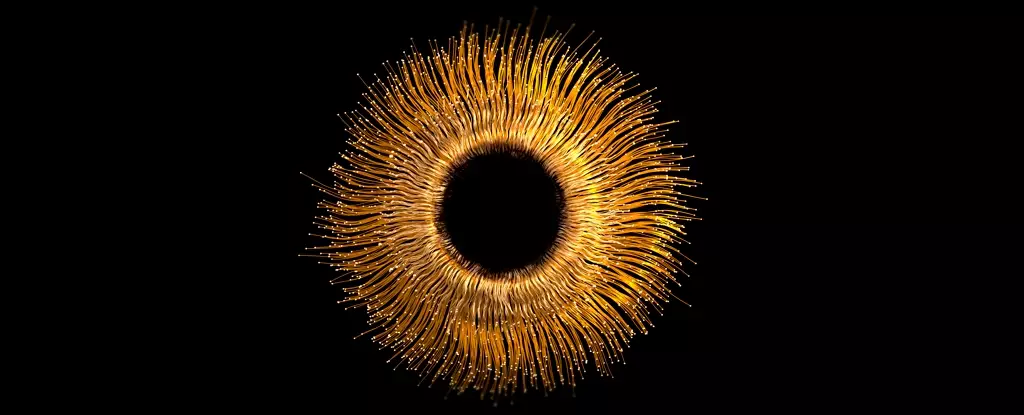In the relentless march of aging, the human body faces a barrage of afflictions, among which age-related macular degeneration (AMD) stands out as a particularly cruel thief, robbing millions of their precious gift of sight. Traditional treatments for AMD have offered little more than a delay in the inevitable decline of vision, leaving many to grapple with a profound sense of loss. However, emerging research from Brown University hints at a groundbreaking and unconventional approach: gold dust injected into the eyes. This innovative therapy might seem outlandish at first, but the implications of such a methodology could fundamentally alter the landscape of retinal disease management.
Biomedical engineer Jiarui Nie’s work posits a new possibility—not just hope for those grappling with AMD, but an actual framework that suggests tangible restoration of vision without invasive procedures. By employing minute gold nanoparticles that are thousands of times finer than human hair, combined with an innovative method of activating specific retinal cells via infrared lasers, this therapy dares to challenge the status quo. The laser’s application through simple eyewear could revolutionize accessibility for AMD patients, who currently find themselves either resigned to their fate or subjected to invasive surgical techniques.
Science That Dares to Disrupt
It is essential to view Nie’s research within the broader context of scientific evolution. Historically, the medical community has often leaned towards invasive solutions, requiring complex surgeries and prolonged recovery times. This new gold dust therapy, by virtue of its minimally invasive properties, embodies the promise of a more humane approach to medical care—one that respects the patient’s dignity while still pursuing aggressive treatment options.
Additionally, the findings from the mouse models present an encouraging narrative that cannot be overlooked. With evidence suggesting that gold nanoparticles can remain in the retina with minimal toxicity, the notion of a long-lasting, effective solution is tantalizing. While we are still far from understanding the full implications of this treatment, the potential to activate compromised retinal cells mirrors the very essence of humanity’s ongoing struggle against disease: adaptation and innovation.
Challenges of Trust in Scientific Progress
Yet, while this novel treatment captures our collective imagination, it is not without challenges. The transition from mouse experiments to human applications is fraught with ethical and logistical hurdles. The medical community must navigate regulatory frameworks that can often stifle innovation. Moreover, the skepticism surrounding unconventional methodologies means that rigorous clinical trials will be necessary to ensure both the safety and efficacy of this new treatment.
Public perception also plays a vital role in the acceptance of such therapies. Many individuals harbor a deep-seated hesitation towards innovative treatments, often favoring traditional approaches, despite their inadequacies. The narrative around “gold dust in eyes” could easily be dismissed as fringe science unless substantial evidence and testimonials catalyze a shift in perception.
A Future Worth Fighting For
In a world increasingly embracing technological advancements, the relevance of studies like Nie’s cannot be overstated. With other research efforts already focusing on reprogramming retinal cells and other health breakthroughs, the convergence of science and technology appears to promise a brighter future for those experiencing vision loss.
This paradigm shift has the potential not only to transform how we approach retinal therapies but also to inspire other fields grappling with similar dilemmas. A critical examination of our understanding surrounding eye diseases prompts a broader inquiry into healthcare’s evolving landscape. Are we prepared to embrace the radical changes required to reclaim lost senses and capabilities? The results from studies like these could very well represent the dawn of a new era in medical treatment—a testament to the indomitable spirit of invention.
As we stand at the threshold of this potential transformation, we must ask ourselves, are we ready to regard this unconventional gold-dusted therapy as a genuine solution, or will we allow apprehension to cloud our vision?


Leave a Reply